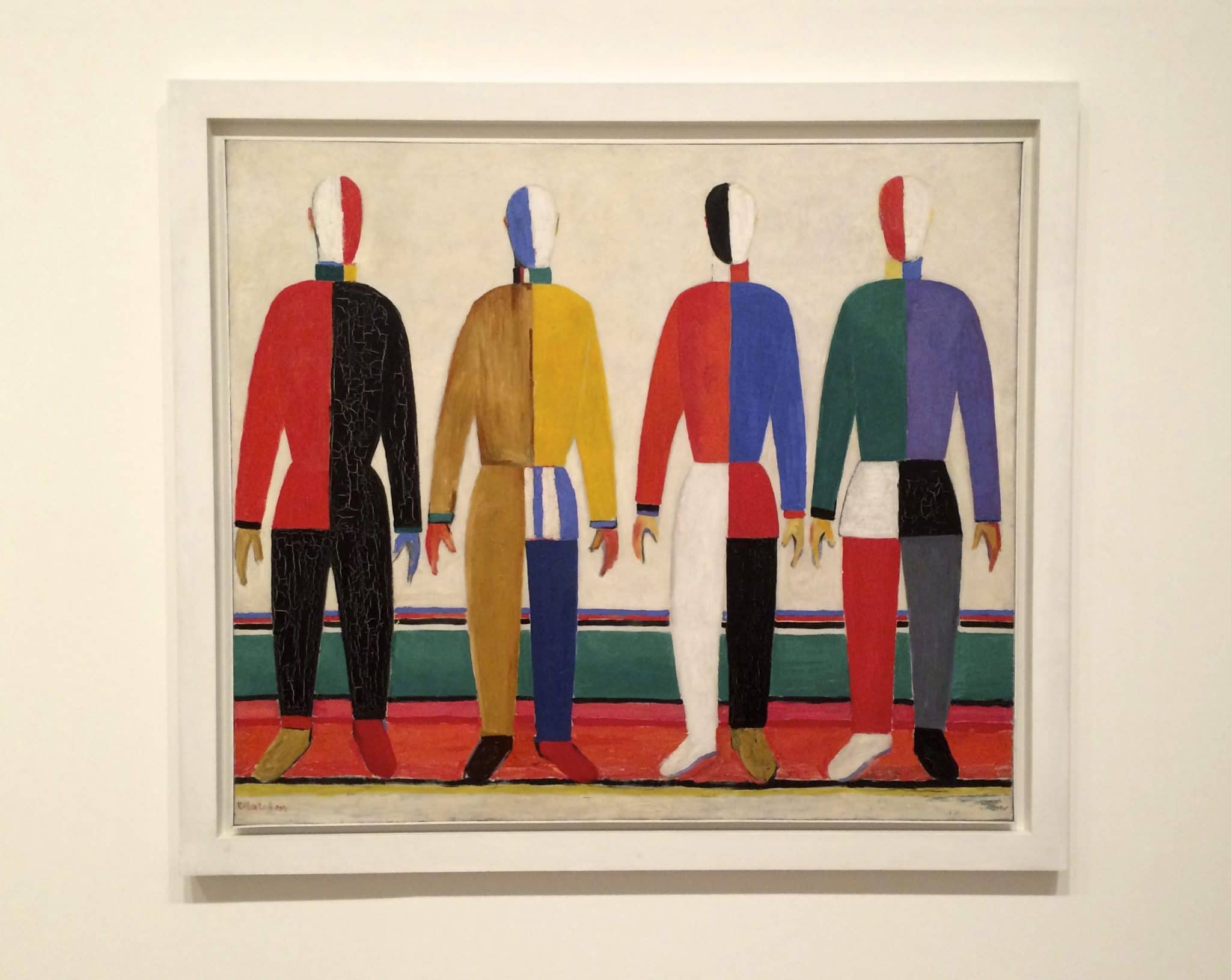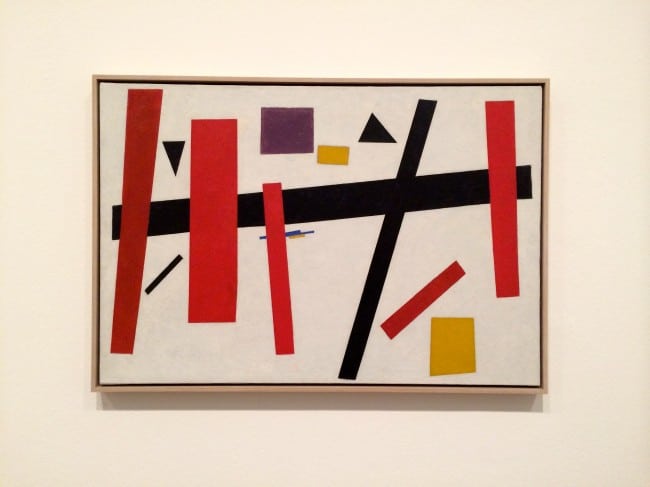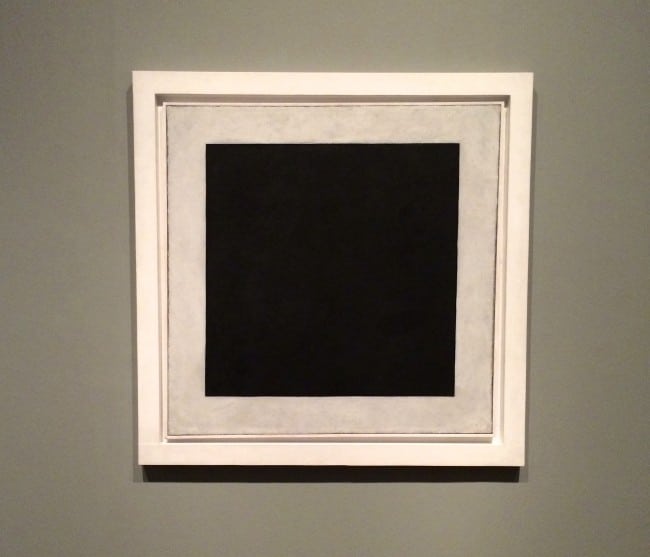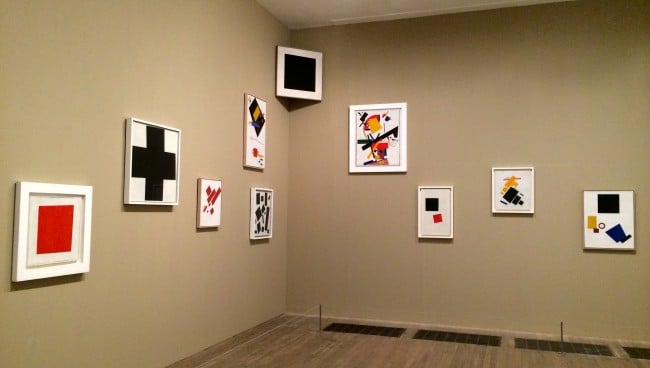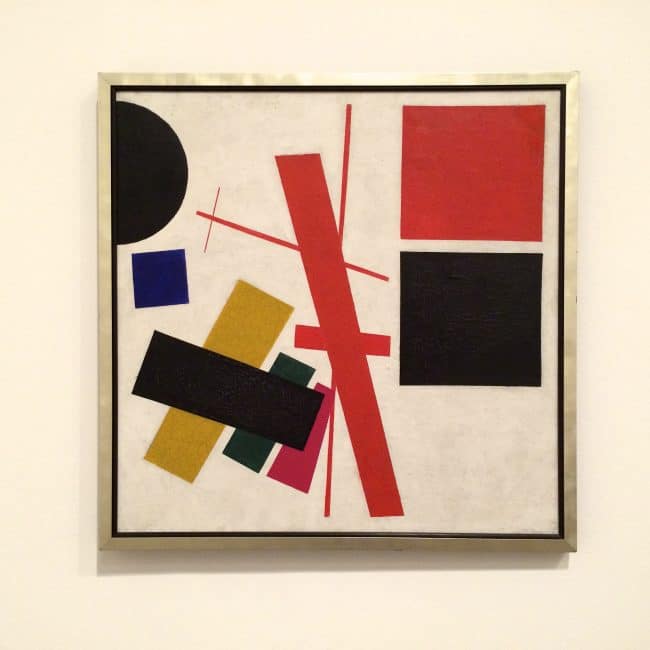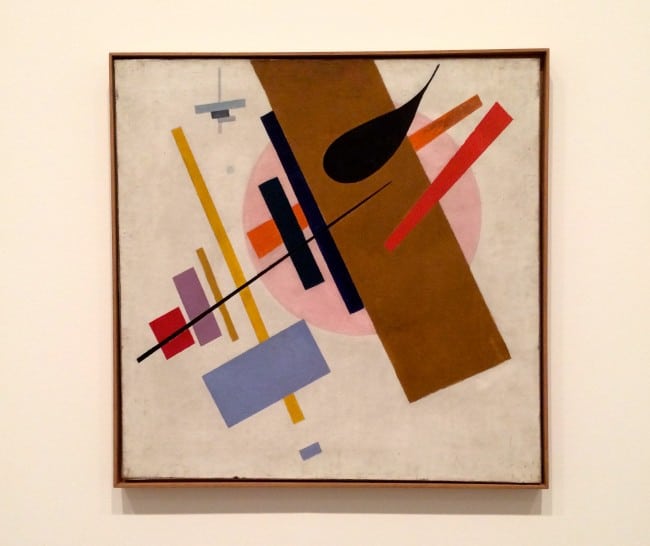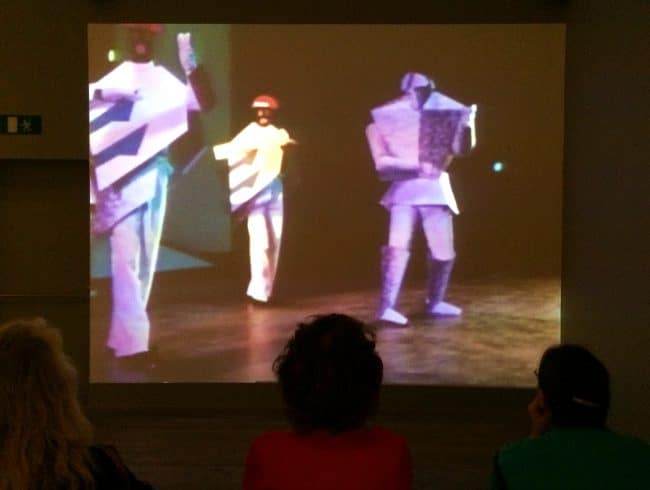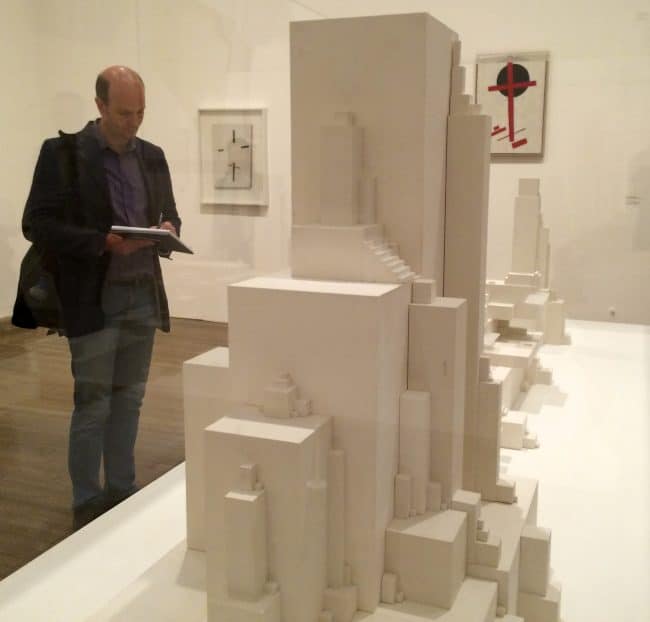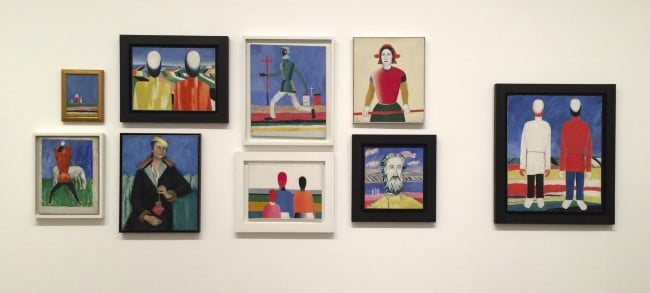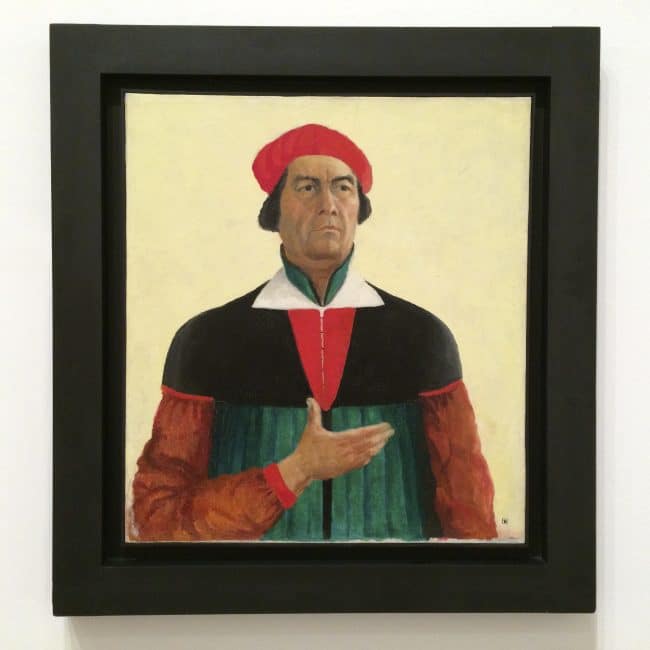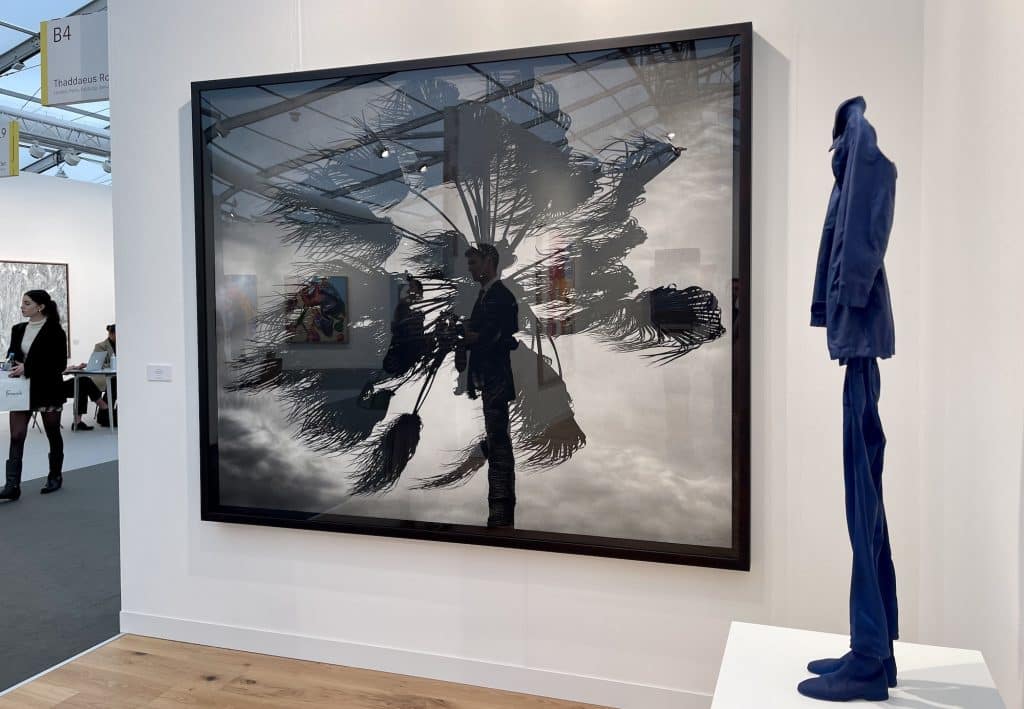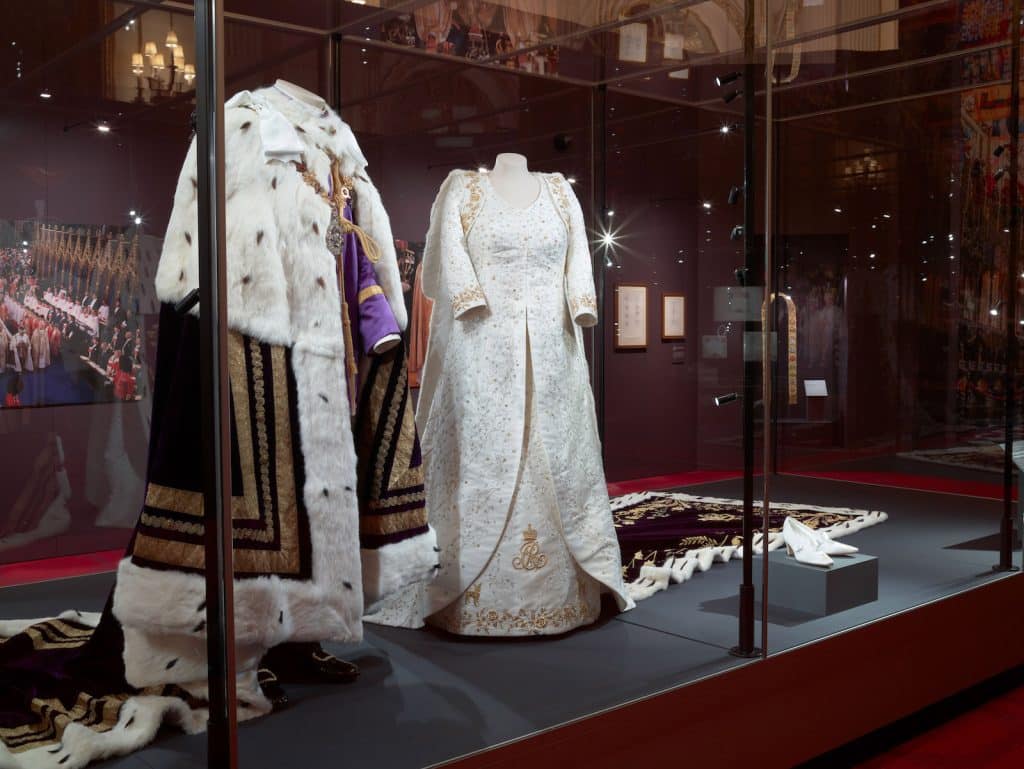Despite Kasimir Malevich being widely feted during his lifetime, exhibitions of work since his death in 1935 have been few and far between. With the location of many works not only behind the iron curtain but considered subversive – the seminal ‘Black Square’ was actually hidden from view by the Soviets until the 1980’s – the opportunity for bringing together a significant body of Malevich’s work has been limited.
The Tate have however taken advantage of a new era of international co-operation to mount a show that is quite simply breathtaking. A 2003 Guggenheim-sponsored tour was impressive but this Tate show dwarfs anything previously attempted. An unprecedented international collaboration has brought over 150 major works plus another 150 works on paper, publications and film. It was with great anticipation therefore that we previewed the Tate show, entitled simply Malevich.
Kasimir Malevich is of course most famous for one of the defining works of the 20th century – the Black Square. This slightly uneven black shape painted with a white frame, was created in 1915 roughly contemporaneously with Marcel Duchamp’s ground-breaking readymades. Equally revolutionary and just as important it boldly and clearly signalled the end of painting by bringing an end to centuries of representation. This was a giant artistic full stop.
Malevich had momentously declared that art was now free of history and was ready for “the beginning of a new culture”. He entitled his new beginning Suprematism. This was a bold visual language of abstract geometric shapes and stark colours celebrated in 1915 by its first exhibition The Last Exhibition of Futurist Painting 0.10 (Zero-ten). Known to all art students as a landmark occasion and always illustrated by the same small black and white image – the only one known – it is a seminal moment in twentieth century art.
The Tate has recreated this momentous event with by reuniting nine of the remaining twelve known works and rehanging them according to this surviving image of the original exhibition. The small photograph shows two adjacent walls densely hung ‘salon’ style with the literally iconic Black Square positioned in the top corner – taking the traditional place of a typical home’s religious icon.
Despite the absence of many works, the sensation upon entering this room is profound. Suddenly one is aware of what an impact must have been felt one hundred years ago upon arriving at the same viewpoint; an earth-shattering assault on the senses that turned the art world on its head. The visual effect is similarly strong – the black and white works are bold and striking, the others surprisingly colourful, a feeling of awe still present.
The remainder of the show necessarily takes a back seat but is still impressive. Starting from his early paintings of Russian landscapes, agricultural workers and religious scenes, the exhibition follows the influence of the French Impressionists, particularly Matisse, Cezanne and Gauguin and shows his journey towards abstract painting and his suprematist masterpieces.
In 1913, together with musician Mikhail Matyushin and poet Aleksei Kruchenykh, Malevich produced a manifesto calling for the dissolution of language and the end to rational thought before producing with them the futurist opera Victory Over the Sun. The collaboration helped bring forward ideas to wrest painting away from its duty to render a world of myths, stories and representations and inevitably to Black Square – two versions of the four that were made are in the show.
The exhibition moves in to the Suprematist era with a stunning series of rooms that chronicle Malevich’s most inventive period. Despite shortages and desperately poor living conditions he still produced a whole series of exciting geometric abstracts – on the white backgrounds of ‘infinite space’ – and a variety of monochromes or bold shapes.
Call-up to the war however soon slowed down his output before the gradually increasing disapproval of the new Soviet leaders of avant-garde art forced him in to abandon painting for teaching and drawing, chronicled with the help of some large European collections.
Possibly chastened by the Stalinist state in to conforming, he later returns to painting combining his early style with the strange introduction of aspects of realism and Renaissance portraiture. It is notable however that many of his last works are not signed but instead feature a tiny black square – the same Black Square that hung over his death bed and led his funeral cortege. Malevich certainly realised that this was his key achievement – an iconic work that symbolised both the end and a new beginning.
Malevich at Tate Modern, (020 7887 8888) until 26 October 2014.




